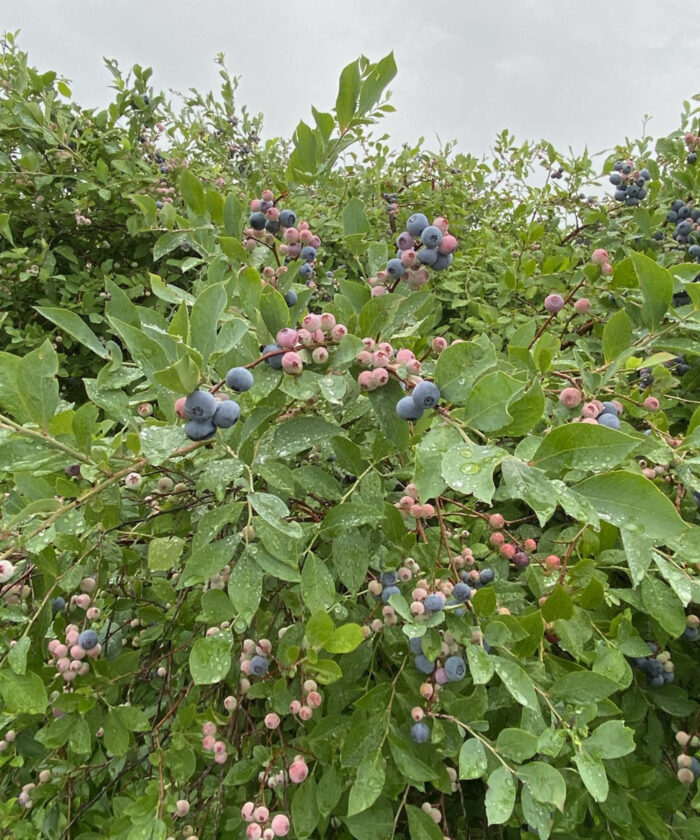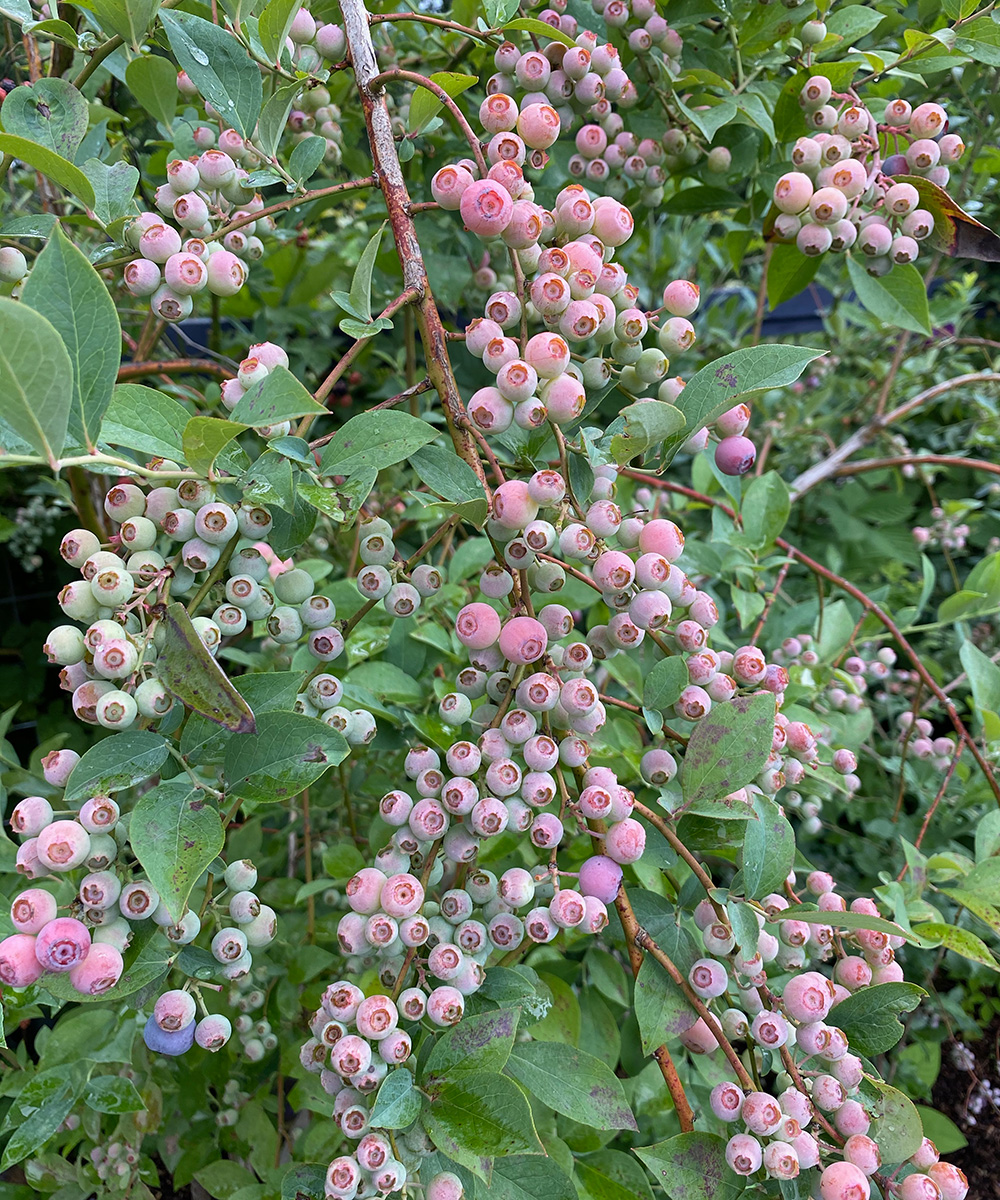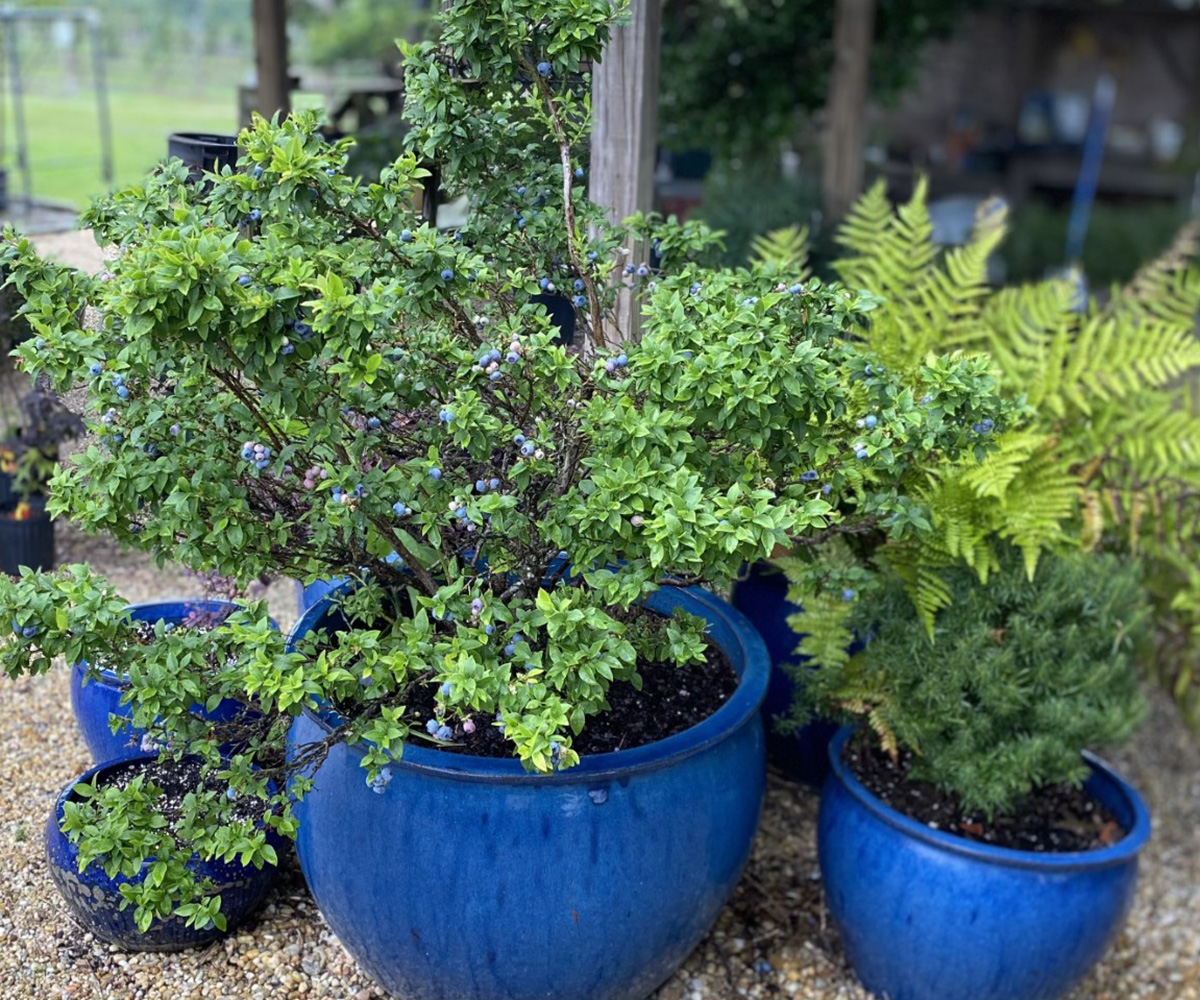Tips for Healthy, Happy Blueberries in the South
Get a sweeter, more bountiful harvest by providing perfect conditions

We always wonder when we hear people say that they don’t like blueberries whether they’ve ever had ripe, freshly picked blueberries. They taste quite different from blueberries picked a little green and refrigerated for a week or two. Fortunately, here in the South, they are pretty easy to grow. Blueberries just need to have their basic needs met. If you’ve had difficulty with growing blueberries in the past, make sure these conditions are met before you give up.
Soil
Blueberries need soil with a pH of less than 5. Most soils in our part of the world fit this requirement. Guesswork isn’t necessary because it’s very easy to get your soil tested. Your local agricultural university or extension service are good resources.
Water
Blueberries like regular irrigation, especially when they have fruit on them. Adequate water makes for bigger berries. Blueberries have fine roots, and the plants don’t thrive in dry soils.
Light
Blueberries prefer full sun. Sun equals sugar in terms of fruit. Although the plants will grow and produce fruit in partial shade conditions, the fruit may be quite tart. The more sun the plants get, the more sugar they produce.

Diversity
You should plant two blueberries that are not the same variety in your garden for cross-pollination. For example, we grow native rabbiteye blueberries (Vaccinium virgatum, Zones 6b–9) here in central Alabama. There are quite a few varieties of rabbiteye to choose from, including early, midseason, and late-ripening varieties. Some of our favorites are ‘Premier’, ‘Climax’, ‘Brightwell’, ‘Powder Blue’, and ‘Austin’.
Spacing
Give each plant about 6 feet of space. Be certain to plant them at the same level they are at in the pot. A bunch of extra soil on top of the root ball may cause them to struggle.
Maintenance
Mulching every year helps keep weeding down and helps with soil moisture retention. Twice yearly fertilization in March and June helps the plants grow plenty of new wood for next year’s fruit. Blueberries like a fertilizer that is acid-forming, such as an azalea/camellia fertilizer. When choosing a fertilizer, make sure the nitrogen is not in the nitrate form. We prune blueberries in late summer to remove old, dead wood and reduce the height of the shrubs.

Try something new
There are a couple of other choices of blueberries for the South besides the go-to rabbiteye. Native Southern highbush (V. darrowii, Zones 8–10) is very low chilling and may flower before the last frost, but if you can protect it, it gives you early fruit. ‘Top Hat’ (V. ‘Top Hat’, Zones 3–8), or ‘Tophat’, is a Northern highbush blueberry that can be grown in our area. It is mostly self-fruitful and grows great in a container since its mature size is 2 feet tall and 3 feet wide.
Plant your own blueberries and try them fresh and ripe. If they still aren’t on your menu, at least the birds will be happy. Need more help with your blueberry bushes? Read Growing Blueberries in the South.
—Jason and Shelley Powell own and manage Petals from the Past, a garden center in Jemison, Alabama.
Fine Gardening Recommended Products

The New Organic Grower, 3rd Edition: A Master's Manual of Tools and Techniques for the Home and Market Gardener, 30th Anniversary Edition
Fine Gardening receives a commission for items purchased through links on this site, including Amazon Associates and other affiliate advertising programs.

A.M. Leonard Deluxe Soil Knife & Leather Sheath Combo
Fine Gardening receives a commission for items purchased through links on this site, including Amazon Associates and other affiliate advertising programs.

Gardener's Log Book from NYBG
Fine Gardening receives a commission for items purchased through links on this site, including Amazon Associates and other affiliate advertising programs.






Comments
Log in or create an account to post a comment.
Sign up Log in